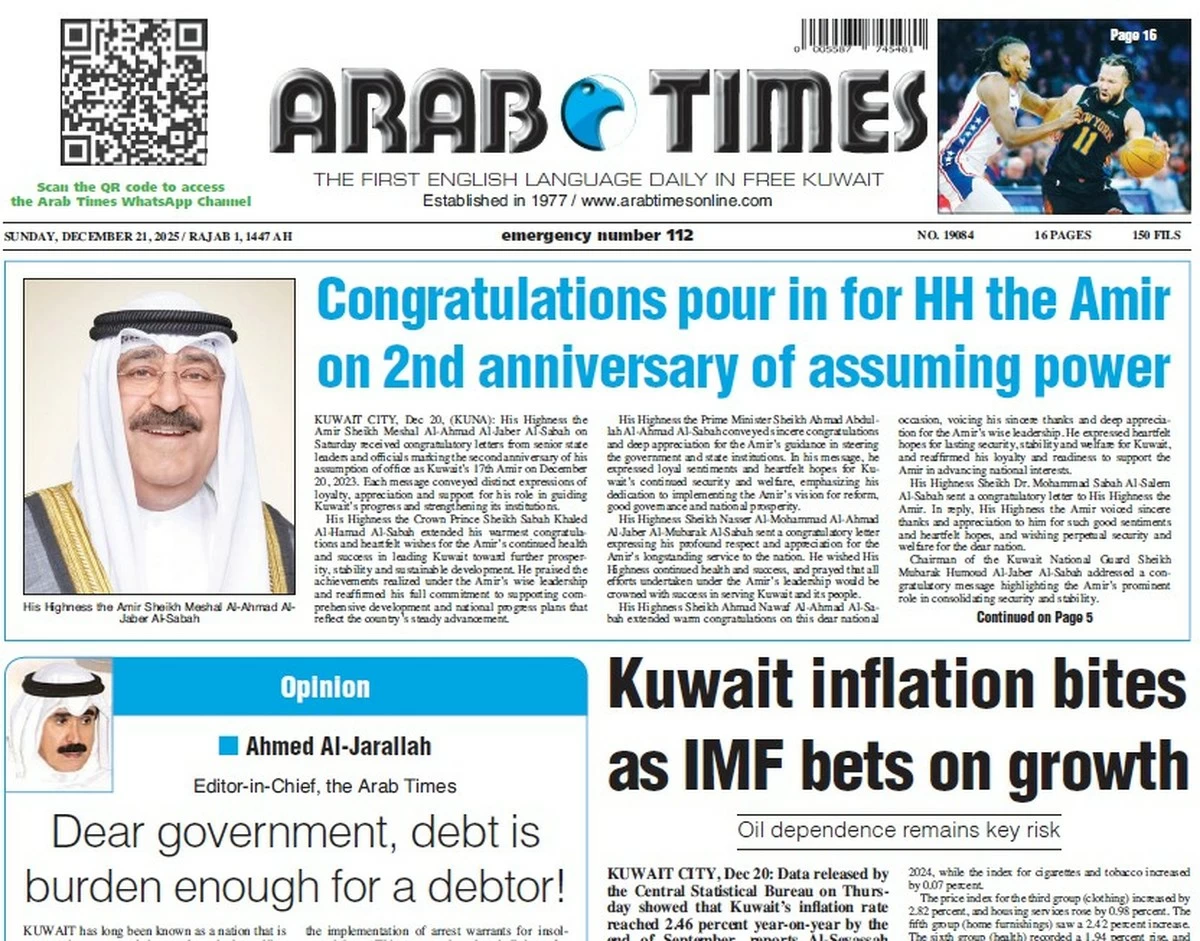11/04/2022
11/04/2022
KUWAIT CITY, April 11: The Kuwait Direct Investment Promotion Authority has released its report for fiscal 2020/2021 (April 1-March 31), which details the foreign direct investment (FDI) in Kuwait during the year, reports Al-Rai daily. According to the report, the authority approved new investments with a total value of 536 million dollars, which supports the expectations of the “Economist Intelligence” unit that foreign direct investment (FDI) inflows to Kuwait will average more than 560 million annually between 2022 and 2026, with the economy recovering from the COVID-19, pandemic offering public-private infrastructure partnerships and privatization initiatives.
However, The Economist Intelligence believes that political stalemate, along with excessive red tape, will have a negative impact on the business environment during the mentioned period. The Economist expects that the political elite will continue to reject foreign investment as a means to enhance the productive capacity in the oil industry, noting that despite the improvement in the regulation of the business sector in Kuwait, with the aim of attracting foreign direct investment inflows. The report finds that the risk of political stalemate, given the long-standing tensions between the legislative and executive branches, as well as the bureaucracy, will continue to deter some investors and possibly slow the fl ow of PPP deals.
This is likely to have a negative impact on the business environment during 2022-2026 and limit the long-term growth prospects. The sourced added that Kuwait lags behind the rest of its neighbors in the Gulf in attracting foreign direct investment, as it fluctuates from year to year but remains at a relatively low level, indicating that this situation reflects the historical failure to implement the reforms required to attract foreign investment and nurture the local private sector. Kuwait’s balance of incoming FDI at $14.8 billion at the end of 2020, is the lowest in the Gulf in absolute value and as a percentage of GDP (13.9 percent), although it is expected to rise gradually during the period between 2022 and 2026, as a result of the opportunities for new projects, especially in the infrastructure sector or related to development plans in the north, the balance will remain low compared to Kuwait’s more dynamic Gulf counterparts. The authority’s annual report shows 9 foreign entities invested a total of $536 million in the economy during 2020/2021. Although FDI inflows 2020/2021 exceeded the 2018/2019 (pre-Corona) level of 352 million, investments in Kuwait are still lower than the record levels of 3.3 billion and 2.9 billion recorded in 2010/2011 and 2011/2012, respectively
Economic
According to the unit, the difficulties in attracting investment inside reflect the slow pace of economic liberalization since then, the bad reputation of Kuwait internationally among investors after the collapse of several high-level deals in 2008 and 2009, the continuous delay and cancellation of partnership projects between the public and private sectors, in addition to the openness of many Gulf countries to foreign investment, especially in recent years.
The unit pointed out that, therefore, incoming flows have tended to decline since 2016. However, it expects these inflows to rise to a still modest annual average of about $600 million in 2022-2026, as the gradual privatization of state assets provides opportunities for foreign investors, and projects are being launched. Public-private partnerships go beyond the utilities sector and infrastructure projects as part of the New Kuwait Vision 2035 development plan.
Sources suggested that foreign direct investment in Kuwait would benefit in light of the momentum gained by the long-delayed public-private partnership infrastructure projects in 2022. The “Investment Promotion” report expects the completion of the Kuwait International Airport development project in 2022, and the construction of the Kuwait City metro and the national railway network to begin in 2024 and 2026.
The Economist Intelligence indicates that the implementation of the development plan for the New Kuwait Vision 2035 and the progress made in large-scale infrastructure and industrial projects, especially in northern Kuwait, should provide opportunities for foreign investors. The unit stated that plans for a range of public-private partnerships in major utilities, as well as public-private partnerships in other sectors, particularly transportation, should create increased opportunities for private sector participation in infrastructure development.
However, it believes that the continued delays in major projects since 2016 and the continued opposition of the National Assembly to foreign investment raise persistent doubts about Kuwait’s ability to follow through on its plans and will limit the increased interest in Kuwait by foreign companies. Seven sectors in 2020/2021 attracted inward FDI inflows, while oil and gas accounted for the largest percentage with 38 percent, followed by aviation 28.1 percent, then construction 15.8 percent, the health sector 14.4 percent, then information technology 2.2 percent, and finally, the industry sector with 1.8 percent. The Economist expects the information technology sector to remain at the forefront of investment offers in Kuwait with the widening of 5G technology and the continued expansion of e-commerce, likely to increase investment in cybersecurity, by both the government and major private sector companies.


